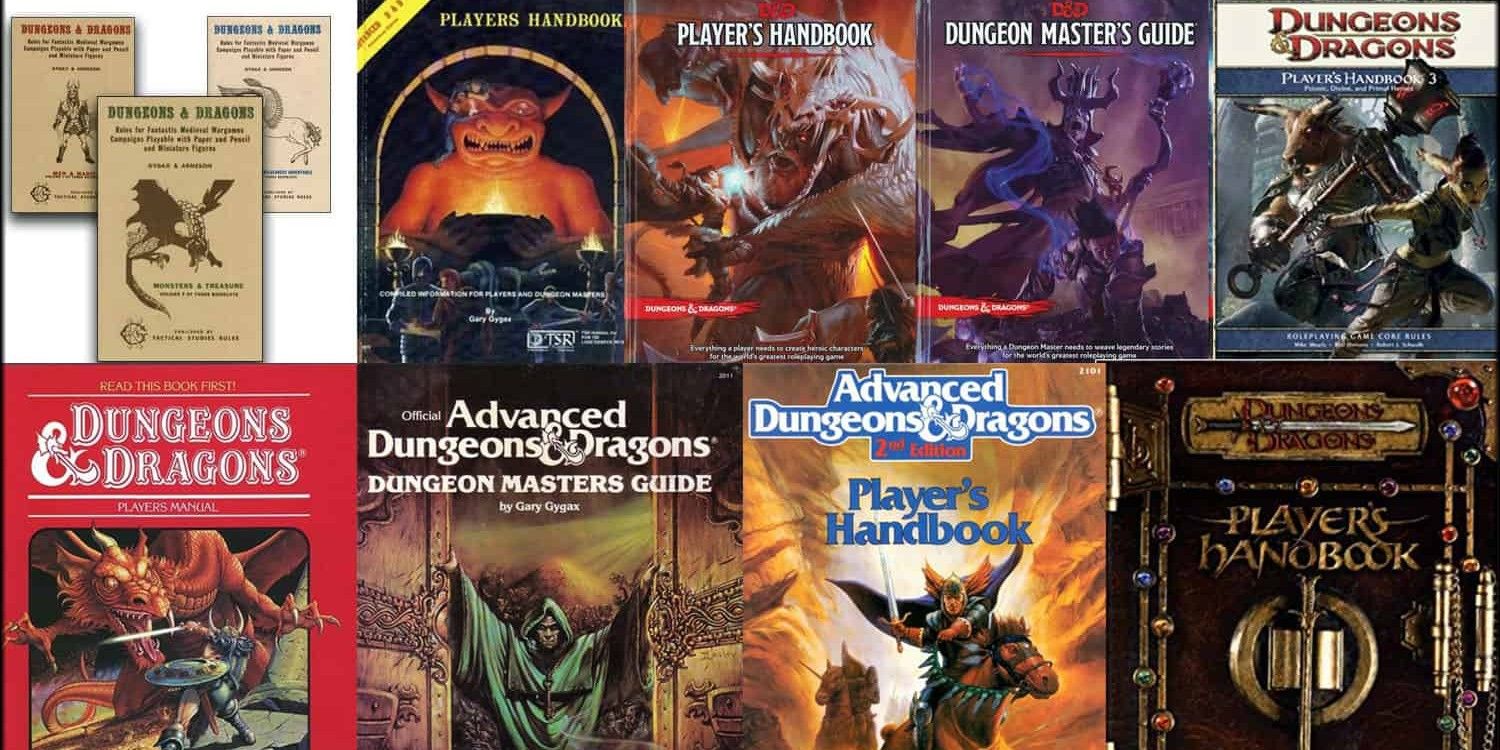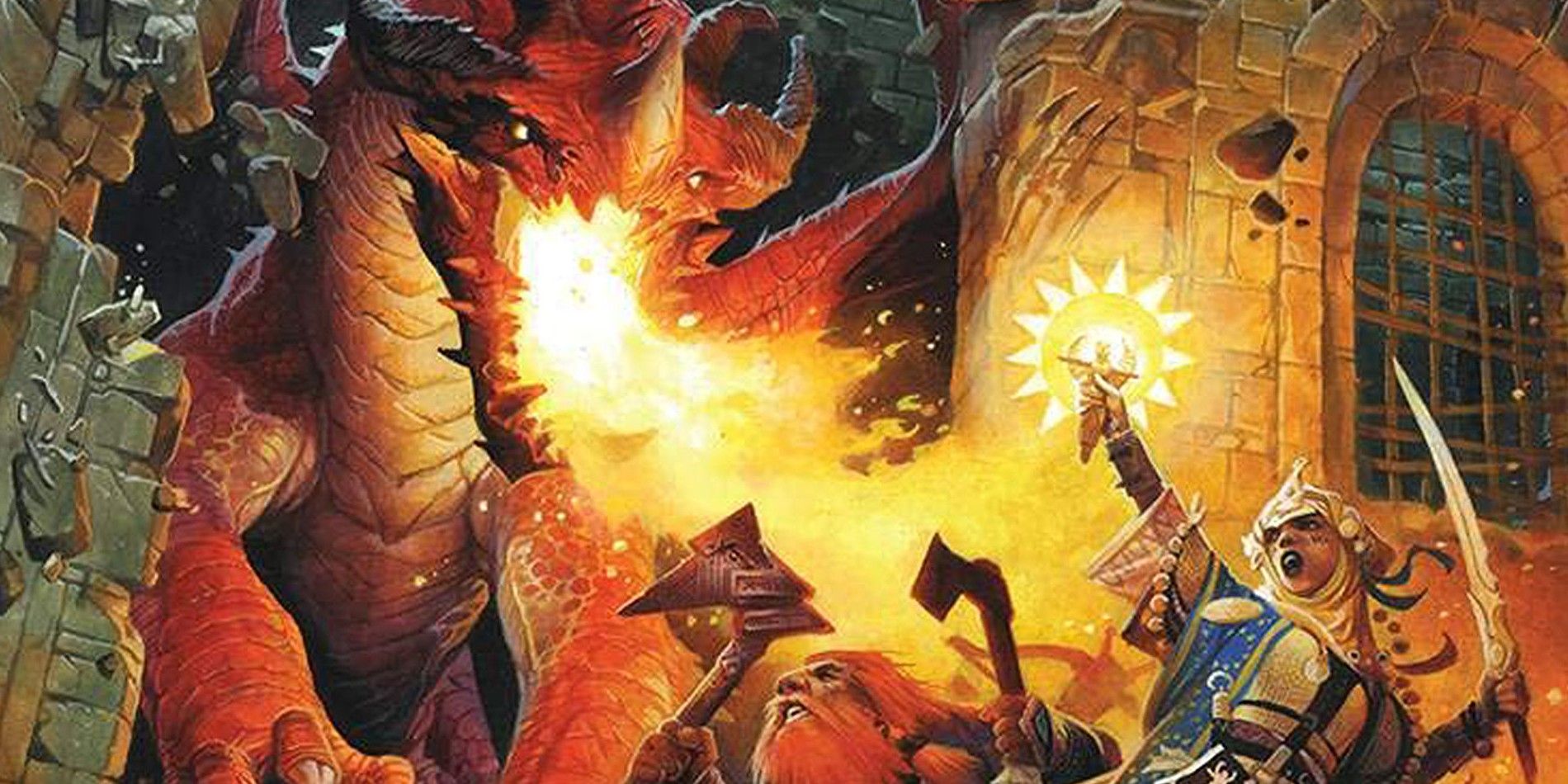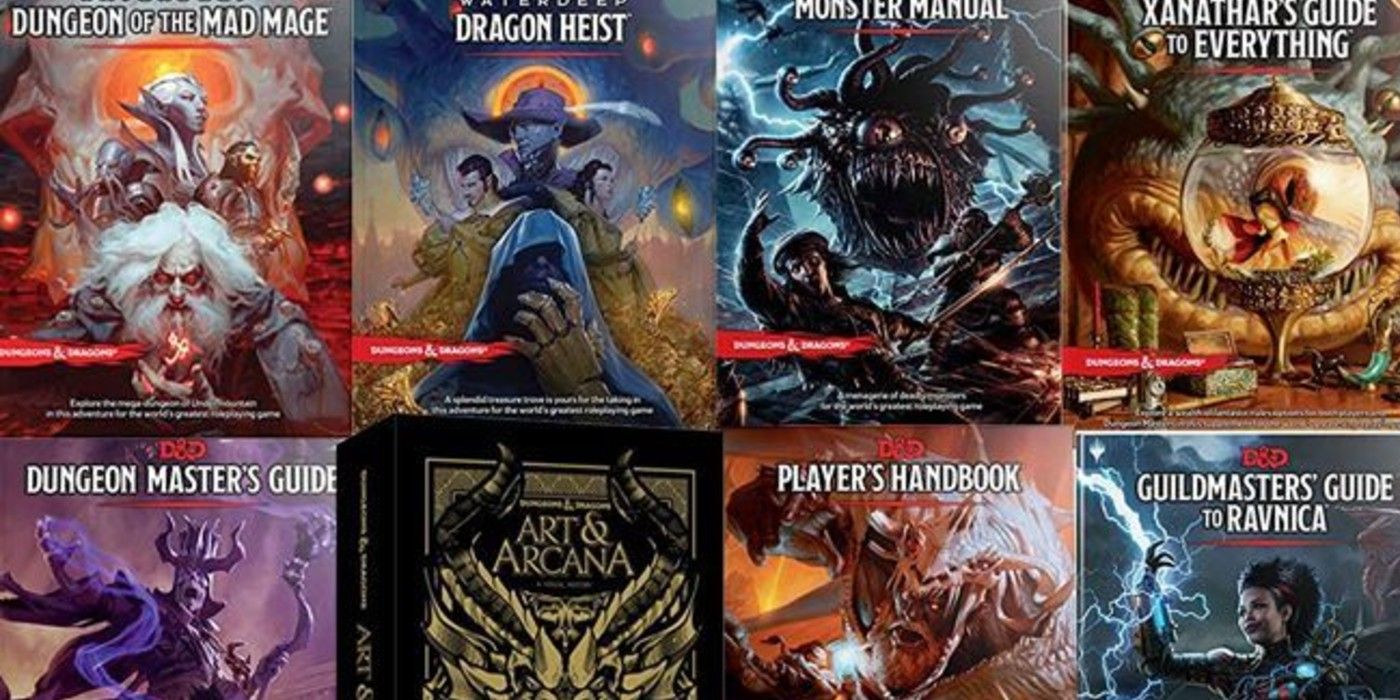This year will mark the seven-year anniversary of the current fifth edition of Dungeons & Dragons. This edition has already outlasted the prior ruleset of D&D, though all recent editions have had shorter lifespans than the earliest versions of Dungeons & Dragons. The game’s nearly 40-year history includes some complications as D&D was split into two game lines for a period of time, and some editions had major revisions partway through their run. Many of D&D’s legacy editions are still available for sale in PDF form, giving these rules a life well beyond the end of their time as print products.
The first Dungeons & Dragons game was created in 1974, and it required familiarity with the rules of Chainmail, a miniature-based wargame not unlike Warhammer and other miniatures games that exist today. This initial version contained some of the concepts that would carry over into later Dungeons & Dragons editions in altered forms. Original D&D featured three alignments (lawful, chaotic, and neutral), three classes for human characters (the original versions of the fighter, wizard, and cleric), as well as dwarf, elf, and hobbit-race characters as their own classes. Just three years later, 1977 featured the split of Dungeons & Dragons into two separate rules lines, a division that would remain for 23 years, until they were reunited in the year 2000 with third edition D&D.
Publisher TSR elected to support two versions of D&D, one of which was Advanced Dungeons & Dragons, which allowed fantasy races to select a character class, instead of demihuman races existing as their own classes. It introduced the nine Dungeons & Dragons alignments commonly known today, combining the law and chaos philosophical axis with the good and evil morality spectrum. Advanced Dungeons & Dragons also featured a number of other more complicated rules, earning its moniker of “advanced.”
Basic Dungeons & Dragons was the alternative rule set, one that adhered closer to the simplicity of original D&D, originally viewed by TSR as an easier rule set to master prior to “graduating” to AD&D. The Basic Dungeons & Dragons line had its own revisions and additions, with expansions from the Expert Set to the Immortals Set eventually raising the maximum level to 36. Although one could argue “original” Dungeons & Dragons lasted only three years, from 1974 to 1977, it is a bit murkier, as Basic D&D built on the framework of the original.
Pathfinder Extended Third Edition D&D Another Decade
In 1989, Advanced Dungeons & Dragons transitioned to second edition AD&D, which means first edition AD&D was in print for about 12 years, given its launch in 1977. The second edition rules were featured in classic PC games from BioWare, like the original Baldur’s Gate series of games and Icewind Dale, as well as Planescape: Torment. With the addition of supplemental books like Skills and Powers and Combat and Tactics, second edition Advanced Dungeons & Dragons was arguably one of the most complex versions of the game ever published, with those optional rules factored in. This edition also brought an influx of original settings for the D&D game, with Spelljammer and Planescape providing very different approaches to planar travel, as well as new box sets for settings that made their debut in earlier editions, like Forgotten Realms and Ravenloft.
As third edition Dungeons & Dragons replaced second edition and dropped the “advanced” from the game’s name in 2000, second edition Advanced Dungeons & Dragons lasted for about 11 years. The Basic D&D game ran concurrent with both editions of AD&D, receiving revisions from Tom Moldvay and Frank Mentzer, among others, and it stayed in print in various forms up until the launch of third edition. Taken as a whole, Basic D&D was the longest-lasting version of the game, running from 1977 to 1999, although specific versions like the Moldvay and Mentzer books, and the comprehensive Rules Compendium, were cycled in during that 23-year period.
Third edition Dungeons & Dragons was the first version under the new and current publisher, Wizards of the Coast, and it simplified most of the rules and concepts of second edition under a more streamlined, unified mechanic of d20 rolls. The original version of third edition D&D lasted only about three years, as 2003 saw the launch of 3.5 Edition D&D, the first clearly acknowledged “mid point” revision in D&D that rebalanced many of the rules but largely retained compatibility with 3.0. This version was in print another five years, giving third edition a collective shelf life of about eight years, although the rules would remain in play for many years beyond that.
Paizo’s Pathfinder RPG made its debut in 2009, building on the 3.5 D&D rules in what some described as edition 3.75. Original Pathfinder was supplanted by the second edition of Pathfinder in 2019, which further distanced itself from its third edition D&D roots. For those who consider Pathfinder an extension to third edition Dungeons & Dragons, it can be argued that edition remained in print for close to 19 years.
With 5e D&D's Success, It May Outlast Many Predecessors
The 2008-released fourth edition of D&D made sweeping changes to the mechanics, planar cosmology, and alignment systems of the game. Fourth edition D&D is widely considered among the best tabletop RPG combat tactical systems ever, but as successor to Dungeons & Dragons, it was divisive. This edition received a soft reboot of sorts with D&D Essentials in 2010, similar to the 3.5 edition, which combined numerous rules errata balance adjustments with new, simplified classes that mirrored prior editions of D&D more closely while remaining compatible with original fourth edition material.
The current fifth edition of D&D made its debut in 2014, meaning fourth edition Dungeons & Dragons lasted about six years, the shortest lifespan of any version of the game. Fifth edition Dungeons & Dragons will soon hit the seven-year mark, and it has remained fairly close to the form it launched in, with no mid-point changes, and minimal errata to the original rules, more for clarification than rebalancing in most cases. Given that the popularity of the game is at an all-time high, there is every reason to expect fifth edition to enjoy the longer print runs of first and second edition, if not the decades-spanning lifespan of Basic D&D.



